floating atop buildings, this looping super-structure is designed to pump oxygen into seoul
[ad_1]
‘seoul loop’ by kim min jae architects
With overpopulation and an absolute lack of green spaces, the rapidly industrialized city of Seoul is plagued by intense carbon emissions. According to a Seoul Metropolitan Government survey, most of the emissions originate from buildings concentrated in the heart of the capital. Local practice Kim Min Jae Architects responded to those facts by proposing ‘Seoul Loop’, a super-structure project powered by artificial photosynthesis to pump oxygen into the congested city.
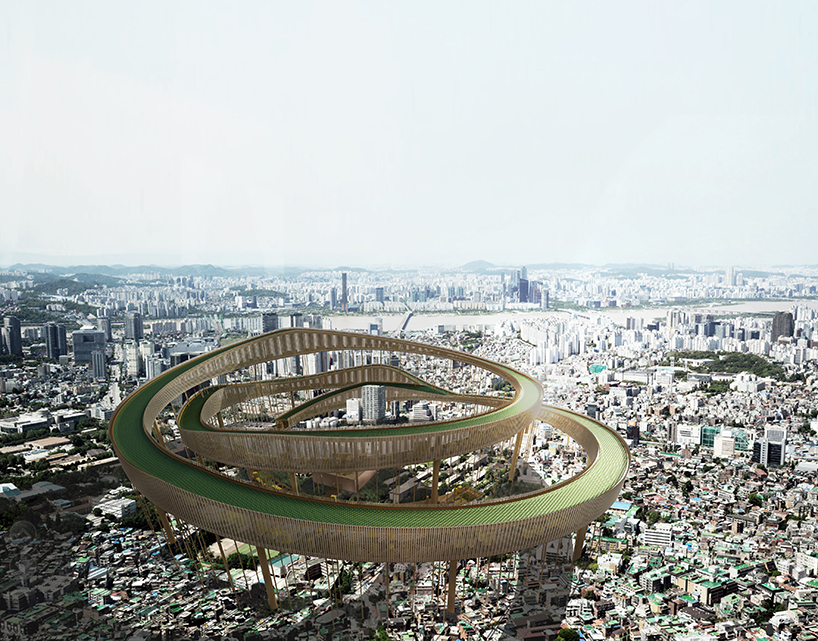
using artificial photosynthesis to ‘oxygenate’ the city
Plant photosynthesis naturally absorbs carbon dioxide and creates a virtuous cycle that exhales fresh oxygen. However, the amount of space that can be filled with plants in the overcrowded city center is minimal. Therefore, lead architect Kim Min Jae (see more here) proposed to secure an area for artificial photosynthesis and build a space for growing plants above the existing urban fabric. As a result, Huam-Dong was chosen as the project site; it is highly concentrated in low-rise buildings and devoid of greenery, making it ideal for a superimposed volume.
Explaining his approach, Min Jae shares: ‘Artificial photosynthesis is a chemical process that biomimics the natural process of photosynthesis to convert sunlight, water, and carbon dioxide into carbohydrates and oxygen. Compared to natural photosynthesis, artificial processes produce oxygen, high-value compounds, and hydrogen. Thus, oxygen can be supplied directly to the city, and the rest of the products can be stored as added value.’

a looping, timber volume floating above low-rise buildings
To maximize the possible area and impact of artificial photosynthesis without harming the existing urban structure, the architect envisioned a loop-type building that floats above the city. Artificial photosynthesis facilities are placed on the roof, and the generated oxygen gets discharged on the elevation.
A mass timber structure is applied to the entire ‘Seoul Loop’ as an environmentally friendly substitute for carbon-intensive materials. The roof features artificial photosynthetic equipment and photosynthetic panels. Oxygen, hydrogen, and high-value compounds generated at this level get collected and stored in a container at the roof edge. Meanwhile, oxygen moves in a pipe within the facade and gets released into the city. Inside the building is a vase for growing plants and small facilities where natural photosynthesis, cultivation, sale, and storage of green plants can occur.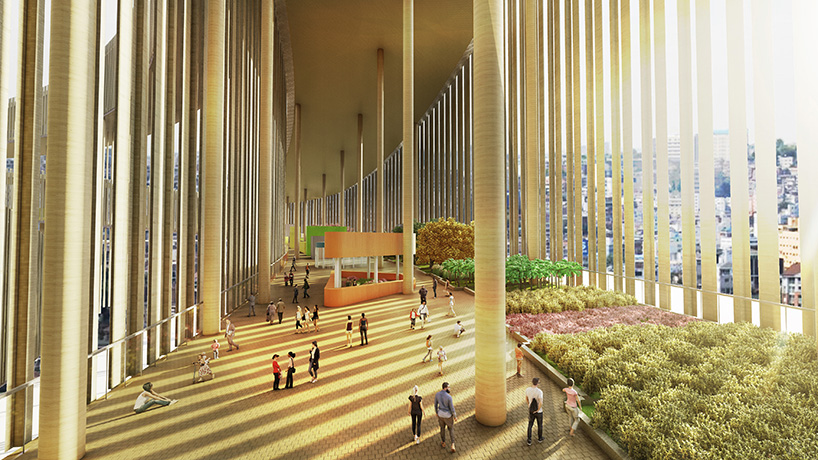
Finally, a modular system was designed in the plant cultivation area to manage the infrastructure better. The modules have the same width but different lengths and are classified mainly into ‘natural park’ and ‘farming’ sectors. In addition, small-scale buildings were placed as interactive programs around the modules: grocery store, information kiosk, F&B, building facilities, core, crop storage, and crop sales office.
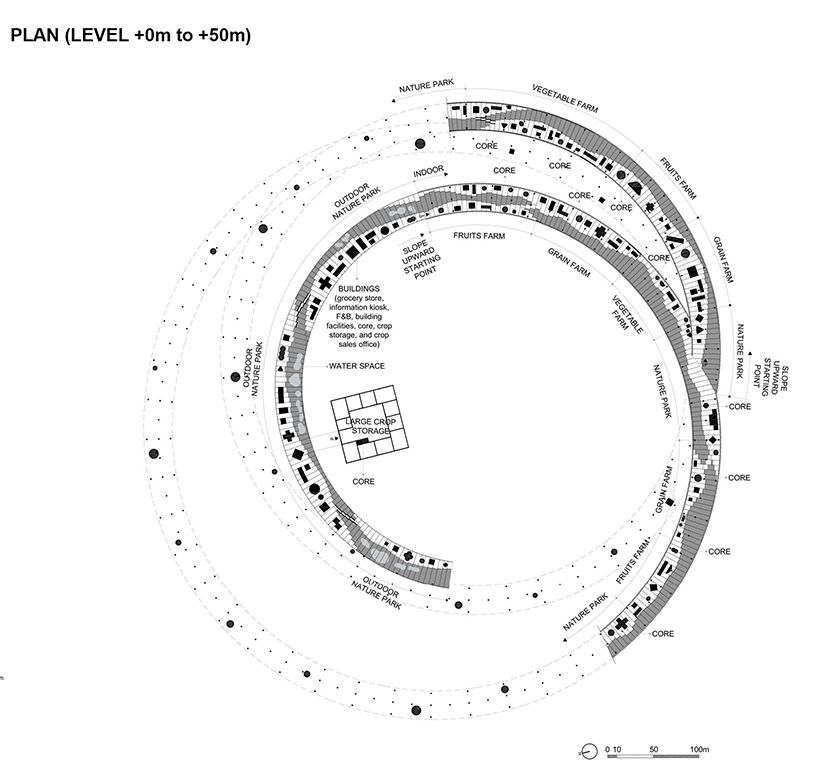
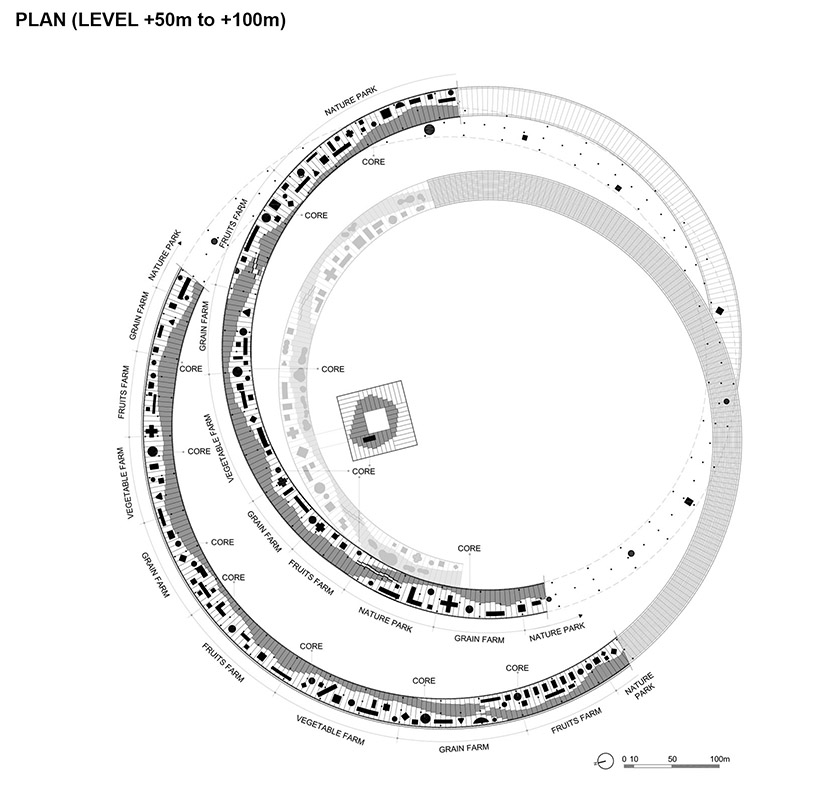
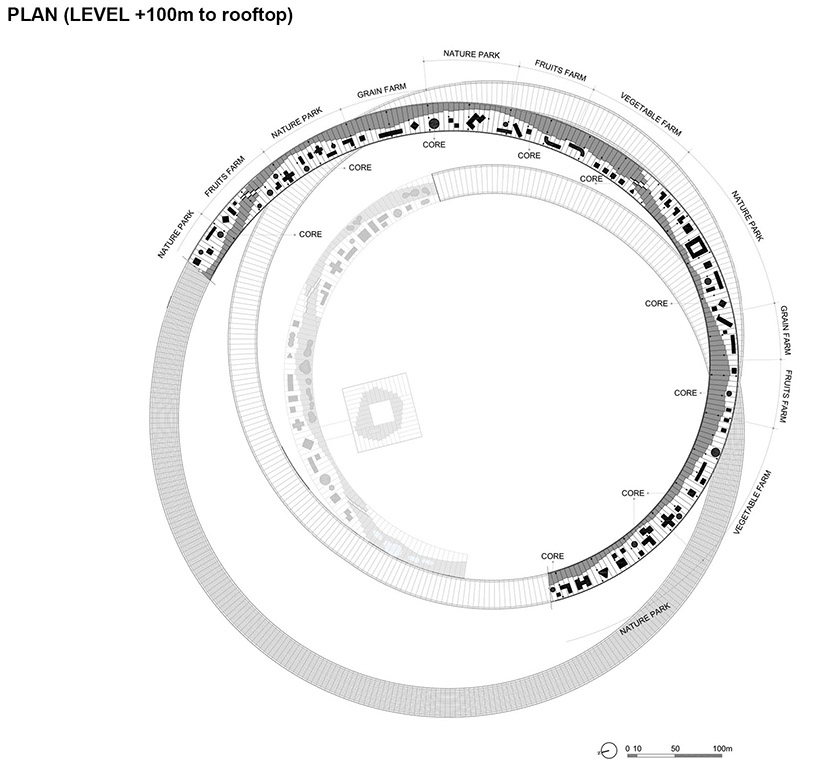


project info:
name: Seoul Loop
location: Huam Dong Area, Seoul, South Korea
architecture: Kim Min Jae Architects
designboom has received this project from our DIY submissions feature, where we welcome our readers to submit their own work for publication. see more project submissions from our readers here.
edited by: lea zeitoun | designboom
[ad_2]
Source link

